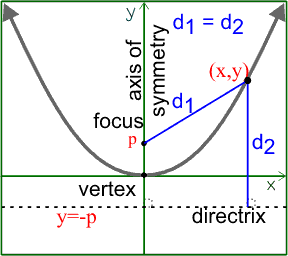In this activity regarding unit circles, we labeled 3 special right triangles according to the Special Right Triangle Rule which will tie in to our derivation of the unit circle.
1. In this picture, we see a 30 degree triangle. To go by this problem step, our numbers in circles are chronological, which means they are in order of what to solve for first. For number 1, we label the triangles according to the aforementioned rule, so our hypotenuse value is 2x, our x value is x radical 3, and our y value is x. We got these values by looking them up on google and applying them here in this problem. For step number 2, we first follow instructions by setting the hypotenuse's value to 1, then divide the value of every other side by the value of the hypotenuse, which is in this case, 2x. Therefore, the y value becomes 1/2, and the x value becomes radical 3/2. We now see the relations of the unit circle to this activity as the values of the sides are identical to the ordered pairs in the unit circle. Step 3,4, and 5 has us simply labeling the r,x, and y value, which are respectively shown in the picture. Step 6 has us draw the coordinate grid of this triangle, and this is where we see how this triangle is literally identical to what it is on the unit circle.
In this picture, the 45 degree triangle is represented. We will go step by step just like the last picture. For step 1, the labeling of this triangle is thanks to the internet, and the hypotenuse value is x radical 2 with the x and y values being x. How this is so is because the 45 degree triangle has two sides which are equal due to this triangle being an angle that is in the middle of 90 degrees. Step 2 has us again set the hypotenuse to 1. We then divide the x and y values by the hypotenuse value, which is x radical 2. We therefore get radical 2/2 for the x and y value because they are the same values. Steps 3,4, 5 are shown as the labeling of the sides and step 6 has the graph of this triangle, and as we can see, the angle is representative of the unit circle.
In this picture, we have a 60 degree triangle, which is basically the same as the 30 degree triangle but the x values and the y values are reversed. The labeling is the same, so step 1 remains unchanged, except that the labeling for x and y are of course different from the first picture in that they are now respectives of each other now. Step 2 has the hypotenuse as 2x, the x value as 1/2, and the y value as radical 3 over 2. We derived these numbers from the work shown in the picture. The steps 3,4, and 5 are shown above clearly. Step 6 is where we draw the triangle. In this example, the x and y swap off in order to get that 60 degree shape.
4. This activity assisted me in deriving the unit circle by teaching me 3 of the most important degrees I need to know for this unit. The x and y values are identical to those on the unit circle and by recognizing these special right triangles I can label the unit circle accordingly and solve real problems with ease.
5. The quadrant the triangles in this activity lies on is the 1st quadrant. If I placed the triangles in quadrant two, then the x value will be negative. If I placed them in quadrant 3, then both values would be negative. If I placed them in quadrant 4, then the y value would be negative. In this picture we see the 3 triangles being placed in different quadrants. The 30 degree triangle has its x value as a negative just like we mentioned. The 45 degree triangle has both ordered pair values being negative. The 60 degree triangle has only its y value being negative.Another change that occurred was how the overall angle measurements of each angle has changed. the 30 degree triangle is a reference angle for sure, but is 150 degrees from the initial axis. The 45 degree triangle is 225 degrees, and the 60 degree triangle is 300 degrees.
Inquiry Activity Reflection:
1. The coolest thing I learned from this activity was how this related to the unit circle I did last year and how easier this activity made my life easier by teaching me the core basics of the unit circle.
2. This activity will help me in this unit because I will be able to derive the unit circle with greater ease by knowing the most important degree properties: 30, 45, and 60.
3. Something I never realized before about special right triangles and the unit circle is how easy it can be after you do this activity of how to solve the properties of the 30, 45, and 60 degree triangles.





